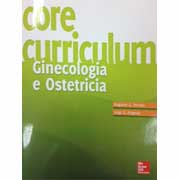50. Lung conditioning is a safe and benign procedure in the preterm neonatan baboon.
XII World Congress of Ginecology and Obstetrics. Abstracts, pag. 616-617, October 23-28, 1988
( in coll. Solca M, Kuehl TJ, Farina C, Levin TJ, Delemos RA )
Summary: Lung conditioning has been shown to affest mechano-elastic properties of fetal lungs, allowing early detection of fetuses at high risk of developing RDS and potentially preventing its appearance. The procedure includes sustained insufflation of the fetal lungs to a pressure of 35 cm H2O and maintenance for a short period on Continuous Positive Airway Pressure (CPAP) of 15 cm H2O before clamping the umbelical cord. The fetus is exteriorized during this process but is still connected to the mother through an intact umbelical cord and a functioning placenta. Five dams at near 140 d gestation ( term 182 d ) underwent classic hysterotomy under inhalation anesthesia; Terbutaline 0.1 mg h -1 was administered through delivery of the fetus. Incision was performed with the aid of a specifically devised stapler which allowed sectioning the uterine wall and suturing the margins with absorbable staples in one quick step; the sac was than opened, the fetus exteriorized, and its trachea intubated. After completion of lung conditioning the fetus was delivered and placed on mechanical ventilation for 24 h. This procedure appears to be quite safe for both mother and fetus, and fairly devoided of technical difficulties in a nonhuman primate model.
